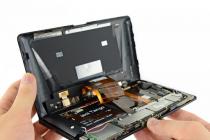Instrumental search is extremely popular. Looking for adults and children, and amateurs and professionals. They are looking for treasures, coins, lost things and buried scrap metal. And the main tool for searching is metal detector.
There is a great variety of different metal detectors, for every "taste and color". But for many people, buying a ready-made branded metal detector is simply financially costly. And someone wants to assemble a metal detector with their own hands, and someone even builds their own small business on assembling them.
Homemade metal detectors
In this section of our site about homemade metal detectors, will be collected: best schemes metal detectors, their descriptions, programs and other data for manufacturing metal detector with your own hands... It does not wake up metal detector circuits from the USSR and circuits on two transistors. Since such metal detectors are only suitable for a visual demonstration of the principles of metal detection, they are not at all suitable for real use.
All metal detectors in this section will be quite technologically advanced. They will have good search performance. And a well-assembled home-made metal detector wakes up a little to yield to factory counterparts. Mainly presented here various schemes impulse metal detectors and metal detector circuits with metal discrimination.
But for the manufacture of these metal detectors, you need not only desire, but also certain skills and abilities. We tried to break down the schemes of the given metal detectors according to the level of complexity.
In addition to the basic data required for assembling a metal detector, there will also be information about the required minimum level of knowledge and equipment for making a metal detector on your own.
To assemble a metal detector with your own hands, you will definitely need:
This list will contain the necessary tools, materials and equipment for self-assembly of all metal detectors without exception. For many schemes, you will also need various additional equipment and materials, here only the basic for all schemes.
- Soldering iron, solder, tin and other soldering accessories.
- Screwdrivers, pliers, wire cutters and other tools.
- Materials and skills for manufacturing a printed circuit board.
- Minimal experience and knowledge in electronics and electrical engineering as well.
- And also straight arms - will be very useful when assembling a metal detector with your own hands.
Here you can find diagrams for self-assembly of the following metal detector models:
 |
Principle of operation | IB |
| Discrimination against metals | there is | |
| Maximum search depth | ||
| there is | ||
| Working frequency | 4 - 17 kHz | |
| Difficulty level | Average | |
 |
Principle of operation | IB |
| Discrimination against metals | there is | |
| Maximum search depth | 1-1.5 meters (Depends on coil size) | |
| Programmable microcontrollers | there is | |
| Working frequency | 4 - 16 kHz | |
| Difficulty level | Average | |
 |
Principle of operation | IB |
| Discrimination against metals | there is | |
| Maximum search depth | 1 - 2 meters (Depends on coil size) | |
| Programmable microcontrollers | there is | |
| Working frequency | 4.5 - 19.5 kHz | |
| Difficulty level | High | |
This simple metal detector is available to repeat even for novice radio amateurs. It has no microcontrollers, expensive and scarce parts - its basis is a simple K561LE5 microcircuit, which is often used in various Soviet equipment. You can do it at home, having only a multimeter from the instruments. A diagram of a simple metal detector is shown in the figure:
It has replaceable coils with a diameter of 25 to 30 cm, which allows, depending on the necessary search conditions, to detect small and large metal objects.

The principle of operation is traditional for devices of this class - the metal detector has a reference generator with a frequency of 100 kHz and a generator sensitive to metals on the DD1.2 element and one of the remote inductance coils connected to the generator. Headphones are connected to the mixer output.

To get more sound volume, you can add a simple ULF and a small speaker. The metal detector is powered by a 9 volt crown battery. The microcircuits in the device can be used K561LA7 or K564LE5. Resistors MLT-0.125, variable - any small-sized. Trimmer capacitor c3, from any Chinese receiver. The search coil must contain the following number of turns:
For a coil with a diameter of 25 mm - 150 turns of wire PEV-1 0.1;
For a coil with a diameter of 75 mm - 80 turns of PEV-1 0.2;
For a coil with a diameter of 200 mm - 50 turns of PEV-1 0.3.

After making one of the coils, we connect it to the circuit. With a resistor motor and a variable capacitor C3, we achieve a low-tone sound in the headphones.

When the coil approaches the metal, the sound in the headphones should change the tonality - thus, the presence of a metal object in the search zone is determined. As a body, I used a plastic box of suitable dimensions.
Discuss the article WE MAKE A METAL DETECTOR IN HOME CONDITIONS
A metal detector or metal detector is designed to detect objects that differ in their electrical and / or magnetic properties from the environment in which they are located. Simply put, it allows you to find metal in the ground. But not only metal, and not only in the ground. Metal detectors are used by inspection services, criminologists, the military, geologists, builders to search for profiles under the cladding, fittings, reconciliation of plans-schemes of underground communications, and people of many other specialties.
Do-it-yourself metal detectors are most often made by amateurs: treasure hunters, local historians, members of military-historical associations. For them, beginners, this article is primarily intended; the devices described in it allow you to find a coin from a Soviet penny at a depth of 20-30 cm or a piece of iron with a sewer hatch about 1-1.5 m below the surface. However, this homemade device can also be useful on the farm during repairs or at a construction site. Finally, having found a centner or two of an abandoned pipe or metal structure in the ground and handed over the find to scrap metal, you can bail out a decent amount. And there are definitely more such treasures in the Russian land than pirate chests with doubloons or boyar-robber egg-boxes with efimkas.
Note: if you are not versed in electrical engineering with radio electronics, do not be intimidated by the diagrams, formulas and special terminology in the text. The very essence is stated simply, and at the end there will be a description of the device, which can be made in 5 minutes on the table, not being able not only to solder, but to twist the wires. But it will allow you to "feel" the peculiarities of the search for metals, and if interest arises, knowledge with skills will also come.

A little more attention compared to the rest will be paid to the Pirate metal detector, see fig. This device is simple enough for beginners to repeat, but in terms of its quality indicators it is not inferior to many branded models with a price of up to $ 300-400. And most importantly, it showed excellent repeatability, i.e. full operability when manufactured according to descriptions and specifications. The circuitry and operating principle of the "Pirate" are quite modern; there are plenty of guides on how to set it up and how to use it.
Operating principle
The metal detector operates on the principle of electromagnetic induction. V general scheme The metal detector consists of a transmitter of electromagnetic oscillations, a transmitting coil, a receiving coil, a receiver, a circuit for extracting a useful signal (discriminator) and an indication device. Separate functional units are often combined schematically and structurally, for example, the receiver and transmitter can operate on the same coil, the receiving part immediately selects the useful signal, etc.

The coil creates an electromagnetic field (EMF) of a certain structure in the environment. If an electrically conductive object is in the area of its action, pos. And in the figure, eddy currents or Foucault currents are induced in it, which create its own EMF. As a result, the structure of the coil field is distorted, pos. B. If the object is not electrically conductive, but has ferromagnetic properties, then it distorts the original field due to shielding. In either case, the receiver detects the difference between the EMF and the original one and converts it into an acoustic and / or optical signal.
Note: in principle, it is not necessary for a metal detector that the object is electrically conductive, the ground is not. The main thing is that their electrical and / or magnetic properties are different.
Detector or scanner?
In commercial sources, expensive highly sensitive metal detectors, eg. Terra-N are often called geoscanners. This is not true. Geoscanners operate on the principle of measuring the conductivity of the soil in different directions at different depths, this procedure is called lateral logging. Based on the logging data, the computer builds on the display a picture of everything in the earth, including geological layers of different properties.
Varieties
Common parameters
The principle of operation of a metal detector can be implemented technically different ways according to the purpose of the device. Metal detectors for beach gold prospecting and construction and repair search may look similar in appearance, but differ significantly in scheme and technical data. To make a metal detector correctly, you need to clearly understand what requirements it must meet for this type of work. Based on this, the following parameters of search metal detectors can be distinguished:
- Penetration, or penetrating power, is the maximum depth to which the EMF of the coil extends in the ground. Deeper, the device will not detect anything at any size and properties of the object.
- The size and dimensions of the search area is an imaginary area in the ground in which the object will be found.
- Sensitivity - the ability to detect more or less small objects.
- Selectivity is the ability to react more strongly to desirable findings. The sweet dream of beach miners is a detector that only beeps for precious metals.
- Noise immunity - the ability not to react to the EMF of extraneous sources: radio stations, lightning discharges, power lines, electric vehicles and other sources of interference.
- Mobility and efficiency are determined by energy consumption (how many batteries will last), weight and dimensions of the device and the size of the search area (how much can be "probed" in 1 pass).
- Discrimination, or resolution - gives the operator or the controlling microcontroller the ability to judge the nature of the found object by the response of the device.
Discrimination, in turn, is a composite parameter, since at the output of the metal detector there is 1, maximum 2 signals, and there are more values that determine the properties and location of the find. Nevertheless, taking into account the change in the response of the device during approaching the object, 3 components are distinguished in it:
- Spatial - indicates the location of the object in the search area and the depth of its occurrence.
- Geometric - makes it possible to judge the shape and size of an object.
- Qualitative - allows you to make assumptions about the properties of the material of the object.
Working frequency
All parameters of a metal detector are linked in a complex way and many of the relationships are mutually exclusive. So, for example, lowering the frequency of the generator allows you to achieve greater penetration and search area, but at the cost of increased power consumption, and worsens sensitivity and mobility due to an increase in the size of the coil. In general, each parameter and their complexes are somehow tied to the generator frequency. That's why the initial classification of metal detectors is based on the range of operating frequencies:- Ultra-low-frequency (VLF) - up to the first hundreds of Hz. Absolutely not amateur devices: power consumption from tens of watts, without computer processing, nothing can be judged by the signal, for moving you need a vehicle.
- Low frequency (LF) - from hundreds of Hz to several kHz. Simple circuitry and constructive, noise-immune, but not very sensitive, bad discrimination. Penetration - up to 4-5 m with a power consumption of 10 W (so-called. deep metal detectors) or up to 1-1.5 m when powered by batteries. They react most sharply to ferromagnetic materials (ferrous metal) or large masses of diamagnetic materials (concrete and stone building structures), therefore they are sometimes called magnetic detectors. They are not very sensitive to soil properties.
- Increased frequency (IF) - up to several tens of kHz. Harder than bass, but the requirements for the coil are low. Penetration - up to 1-1.5 m, C grade noise immunity, good sensitivity, satisfactory discrimination. Can be versatile when used in pulsed mode, see below. On watered or mineralized soils (with debris or particles of rocks shielding EMF), they work poorly or do not smell anything at all.
- High, or radio frequency (HF or RF) - typical metal detectors "for gold": excellent discrimination to a depth of 50-80 cm in dry non-conductive and non-magnetic soils (beach sand, etc.) Power consumption - as before. The rest is on the verge of "failure". The efficiency of the device largely depends on the design and quality of the coil (s).
Note: mobility of metal detectors according to PP. 2-4 is good: one set of AA salt cells ("batteries") and without fatigue of the operator can work up to 12 hours.
Stand apart impulse metal detectors... They have a primary current flowing into the coil in pulses. By setting the pulse repetition rate within the LF, and their duration, which determines the spectral composition of the signal corresponding to the IF-HF ranges, it is possible to obtain a metal detector that combines the positive properties of LF, IF and HF or is tunable.
Search method
There are at least 10 methods of searching for objects using EMF. But such as, say, the method of direct digitization of the response signal with computer processing is the lot of professional use.

A homemade metal detector is schematically built most of all in the following ways:
- Parametric.
- Receiving and transmitting.
- Stacked phase.
- On the beats.
Without receiver
Parametric metal detectors in some way fall out of the definition of the principle of operation: they have neither a receiver nor a receiving coil. For detection, the influence of the object on the parameters of the generator coil - inductance and Q-factor is used directly, and the structure of the EMF does not matter. Changing the parameters of the coil leads to a change in the frequency and amplitude of the generated oscillations, which is fixed in different ways: by measuring the frequency and amplitude, by changing the current consumption of the generator, measuring the voltage in the PLL loop (phase-locked loop system, which "pulls" it to a given value), etc.
Parametric metal detectors are simple, cheap and anti-jamming, but using them requires certain skills. the frequency "floats" under the influence of external conditions. Their sensitivity is weak; most of all are used as magnetic detectors.
With receiver and transmitter
The device of the transceiver metal detector is shown in Fig. at the beginning, to an explanation of the principle of action; the principle of operation is also described there. Such devices allow achieving the best efficiency in their frequency range, but they are complex in circuitry and require a particularly high-quality coil system. Transceiver metal detectors with one coil are called induction detectors. Their repeatability is better because the problem of the correct positioning of the coils relative to each other disappears, but the circuitry is more complicated - you need to highlight a weak secondary signal against the background of a strong primary one.
Note: in pulse transceiver metal detectors, the emission problem can also be eliminated. This is explained by the fact that as a secondary signal "catch" the so-called. "Tail" of the pulse re-emitted by the object. Due to dispersion, the primary pulse spreads out during re-emission, and a part of the secondary pulse appears in the gap between the primary ones, from where it is easy to isolate.
Until click
Metal detectors with phase accumulation, or phase-sensitive, are either single-coil impulse, or with 2 generators, each working on its own coil. In the first case, the fact is used that the pulses, when re-emitted, not only spread out, but are also delayed. The phase shift increases with time; when it reaches a certain value, the discriminator is triggered and a click is heard in the headphones. As you get closer to the object, the clicks become more frequent and merge into a sound of an increasingly high pitch. It is on this principle that the "Pirate" is built.
In the second case, the search technique is the same, but 2 strictly symmetrical electrically and geometrically generators work, each on its own coil. At the same time, due to the interaction of their EMF, mutual synchronization occurs: the generators work in time. When the total EMI is distorted, synchronization breaks begin, audible as the same clicks, and then a tone. Two-coil metal detectors with a breakdown of synchronization are simpler than pulse ones, but less sensitive: their penetration is 1.5-2 times less. Discrimination in both cases is close to excellent.
Phase-sensitive metal detectors are the favorite tools of resort miners. The search aces adjust their devices so that exactly above the object the sound disappears again: the repetition rate of the clicks goes into the ultrasonic region. In this way, on a seashell beach, it is possible to find gold earrings the size of a fingernail at a depth of 40 cm. However, on a ground with small irregularities, watered and mineralized, metal detectors with phase accumulation are inferior to others, except for parametric ones.
By squeak

Beats of 2 electrical signals - a signal with a frequency equal to the sum or difference of the fundamental frequencies of the original signals or multiples of them - harmonics. So, for example, if signals with frequencies of 1 MHz and 1000 500 Hz or 1.0005 MHz are applied to the inputs of a special device - a mixer, and headphones or a speaker are connected to the mixer output, then we will hear a pure tone of 500 Hz. And if the 2nd signal is 200 100 Hz or 200.1 kHz, the same will happen, because 200 100 x 5 = 1,000 500; we "caught" the 5th harmonic.
In the metal detector, 2 generators operate on beats: a reference and a working one. The coil of the reference oscillating circuit is small, protected from extraneous influences, or its frequency is stabilized by a quartz resonator (simply - quartz). The contour coil of the working (search) generator is a search one, and its frequency depends on the presence of objects in the search area. Before searching, the working generator is tuned to zero beats, i.e. until the frequencies coincide. Complete zero sound, as a rule, is not achieved, but is tuned to a very low tone or wheeze, so it is more convenient to search. By changing the tone of the beats, the presence, size, properties and location of the object are judged.
Note: most often the frequency of the search generator is taken several times lower than the reference one and operates on harmonics. This allows, firstly, to avoid the harmful in this case, the mutual influence of generators; secondly, it is more accurate to tune the device, and thirdly, to search at the optimal frequency in this case.
Harmonic metal detectors are generally more complex than impulse detectors, but they work on any soil. Correctly crafted and tuned, they are as good as pulsed. This can be judged at least by the fact that beach gold prospectors do not agree in any way, which is better: an impulse or a beating?
Coil and stuff
The most common misconception of novice radio amateurs is the absolutization of circuitry. Like, if the scheme is "cool", then everything will be tip-top. As for metal detectors, this is doubly wrong. their performance benefits are highly dependent on the design and workmanship of the search coil. As one resort prospector put it: "The findability of the detector should pull the pocket, not the legs."
When developing a device, its circuit and coil parameters are matched to each other until the optimum is obtained. A certain circuit with a "foreign" coil, if it works, will not reach the declared parameters. Therefore, when choosing a prototype to repeat, look first of all at the description of the coil. If it is incomplete or inaccurate, it is better to build another device.
About coil sizes
A large (wide) coil emits EMF more efficiently and "enlightens" the ground deeper. Its search area is wider, which makes it possible to reduce "leg detection". However, if there is a large unnecessary object in the search area, its signal will "hammer" the weak one from the desired trifle. Therefore, it is advisable to take or make a metal detector designed to work with coils of different sizes.
Note: typical coil diameters are 20-90 mm for searching for rebar and profiles, 130-150 mm for "beach gold" and 200-600 mm for "large iron".
Monoloop
The traditional type of metal detector coil is the so-called. thin coil or Mono Loop (single loop): a ring of many turns of enamelled copper wire, 15-20 times the width and thickness of the average diameter of the ring. The advantages of the mono-loop coil are the weak dependence of the parameters on the type of soil, the search zone narrowing downwards, which allows moving the detector to more accurately determine the depth and location of the find, and constructive simplicity. Disadvantages - low quality factor, which is why the tuning "floats" during the search process, susceptibility to interference and a vague reaction to the object: working with mono-loops requires considerable experience in using this particular instance of the device. It is recommended for beginners to make homemade metal detectors with monoloops in order to get a workable design without any problems and gain search experience with it.
Inductance
When choosing a circuit, in order to be sure of the reliability of the author's promises, and even more so when designing or revising it yourself, you need to know the inductance of the coil and be able to calculate it. Even if you are making a metal detector from a commercially available set, the inductance still needs to be checked by measurements or calculations, so as not to rack your brains later: why, everything seems to be working properly, and not beeping.
Coil inductance calculators are available on the Internet, but computer program all cases of practice cannot be foreseen. Therefore, in Fig. an old, decades-proven nomogram for calculating multilayer coils is given; a thin coil is a special case of a multilayer one.

To calculate the search mono-loop, the nomogram is used as follows:
- We take the value of inductance L from the description of the device and the dimensions of the loop D, l and t from the same or according to our choice; typical values: L = 10 mH, D = 20 cm, l = t = 1 cm.
- According to the nomogram, we determine the number of turns w.
- We set the stacking coefficient k = 0.5, by the dimensions l (coil height) and t (its width) we determine the cross-sectional area of the loop and find the area of pure copper in it as S = klt.
- Dividing S by w, we get the cross-section of the winding wire, and along it - the diameter of the wire d.
- If it turned out d = (0.5 ... 0.8) mm, everything is OK. Otherwise, we increase l and t for d> 0.8 mm or decrease for d<0,5 мм.
Immunity

The monoloop “catches” interference well, because is designed in the same way as a loop antenna. It is possible to increase its noise immunity, firstly, by placing the winding in the so-called. Faraday shield: a metal tube, braid or foil winding with a break, so that a short-circuited turn does not form, which will "eat" all the EMF of the coil, see fig. on right. If there is a dotted line near the search coil designation on the original diagram (see diagrams below), then this means that the coil of this device must be placed in the Faraday screen.
Also, the shield must be connected to the common wire of the circuit. There is a catch here for beginners: the grounding conductor must be connected to the screen strictly symmetrically to the cut (see the same figure) and brought to the circuit also symmetrically with respect to the signal wires, otherwise the noise will still "crawl" into the coil.
The screen also absorbs some of the search EMF, which reduces the sensitivity of the device. This effect is especially noticeable in impulse metal detectors; their coils cannot be shielded at all. In this case, an increase in noise immunity can be achieved by balancing the winding. The bottom line is that for a remote source of EMF, the coil is a point object, and the emf is interference in its halves will overwhelm each other. A symmetrical coil may also be needed in circuitry if the generator is a push-pull or inductive three-point.

However, in this case, it is impossible to symmetry the coil to the usual radio amateurs in a bifillary way (see Fig.): When conducting and / or ferromagnetic objects are in the field of a bifillary coil, its symmetry is violated. That is, the noise immunity of the metal detector will disappear just when it is most needed. Therefore, you need to balance the mono-loop coil by cross winding, see the same fig. Its symmetry is not broken under any circumstances, but winding a thin coil with a large number of turns in a crosswise manner is hellish work, and then it is better to make a basket coil.
Basket
Basket spools have all the advantages of mono-loops to an even greater extent. In addition, basket coils are more stable, their Q-factor is higher, and the fact that the coil is flat is a double plus: sensitivity and discrimination will increase. Basket coils are less susceptible to interference: harmful emf in crossing wires they extinguish each other. The only drawback is that a precisely made rigid and strong mandrel is needed for basket coils: the total tensile force of many turns reaches large values.

Basket coils are structurally flat and volumetric, but electrically volumetric "basket" is equivalent to a flat one, i.e. creates the same EMF. The volumetric basket coil is even less sensitive to interference and, which is important for pulse metal detectors, the pulse dispersion in it is minimal, i.e. it's easier to catch variance caused by an object. The advantages of the original Pirate metal detector are largely due to the fact that its "native" coil is a bulky basket (see Fig.), But its winding is complicated and time-consuming.
It is better for a beginner to wind a flat basket on his own, see fig. below. For metal detectors "for gold" or, say, for the "butterfly" metal detector described below and a simple 2-coil transceiver, useless computer disks will be a good mandrel. Their metallization will not hurt: it is very thin and nickel. An indispensable condition: odd, and nothing else, the number of slots. A nomogram for calculating a flat basket is not required; the calculation is carried out in this way:
- Set the diameter D2 equal to the outer diameter of the mandrel minus 2-3 mm, and take D1 = 0.5D2, this is the optimal ratio for search coils.
- According to formula (2) in Fig. calculate the number of turns.
- By the difference D2 - D1, taking into account the flat laying coefficient of 0.85, the diameter of the wire in the insulation is calculated.

How it is not necessary and necessary to wind the baskets
Some amateurs undertake to wind voluminous baskets on their own in the manner shown in Fig. below: make a mandrel of insulated nails (pos. 1) or self-tapping screws, wind according to the scheme, pos. 2 (in this case, pos. 3, for the number of turns, a multiple of 8; every 8 turns, the "pattern" is repeated), then foamed, pos. 4, the mandrel is pulled out and the excess foam is trimmed off. But it soon turns out that the stretched turns cut the foam and the whole work went soft-boiled. That is, in order to wind up securely, you need to glue pieces of durable plastic into the holes of the base, and only then wind. And remember: independent calculation of the volumetric basket coil without appropriate computer programs is impossible; the technique for a flat basket is not applicable in this case.

DD coil

DD in this case does not mean long-range action, but a double or differential detector; in the original - DD (Double Detector). This is a coil of 2 identical halves (arms) folded with some overlap. With an accurate electrical and geometric balance of the DD arms, the search EMF is pulled into the intersection zone, on the right in Fig. on the left - a mono-loop coil and its field. The slightest discontinuity in the space in the search area causes imbalance, and a sharp strong signal appears. The DD coil allows the inexperienced seeker to locate a shallow, deep, well-conductive object when a rusty can is laid next to it and above.
DD coils are clearly oriented towards gold; all metal detectors with GOLD markings are equipped with them. However, on finely inhomogeneous and / or conductive soils, they either fail altogether, or often give false signals. The sensitivity of the DD coil is very high, but the discrimination is close to zero: the signal is either extreme, or there is none at all. Therefore, metal detectors with DD coils are preferred by seekers who are only interested in “pocket findability”.
Note: more details about DD coils can be found further in the description of the corresponding metal detector. They shake their shoulders DD or in bulk, like a monopole, on a special mandrel, see below, or with baskets.
How to attach the coil
Ready-made frames and mandrels for search coils are sold in a wide range, but sellers do not hesitate with markups. Therefore, many amateurs make the base of the coil from plywood, on the left in the figure:

Multiple designs
Parametric
The simplest metal detector for finding fittings, wiring, profiles and communications in walls and ceilings can be assembled according to Fig. The ancient transistor MP40 without any changes to KT361 or its analogs; to use pnp transistors, you need to change the polarity of the battery.

This metal detector is a parametric magnetic detector operating at low frequencies. The tone of the sound in the headphones can be changed by adjusting the capacitance C1. Under the influence of the object, the tone decreases, unlike all other types, therefore, initially you need to achieve a "mosquito squeak", and not wheeze or grunt. The device distinguishes live wiring from "empty", a hum of 50 Hz is superimposed on the tone.
Circuit - pulse generator with inductive feedback and frequency stabilization LC-circuit. A loop coil is an output transformer from an old transistor receiver or a low-power "bazaar-Chinese" low-voltage power one. A transformer from an unusable power source of a Polish antenna is very suitable, in its own case, by cutting off the power plug, you can assemble the entire device, then it is better to power it from a 3 V lithium tablet battery. Winding II in Fig. - primary or network; I - secondary or 12 V step-down. This is how the generator works with transistor saturation, which provides negligible power consumption and a wide range of pulses, making it easy to find.

To turn the transformer into a sensor, its magnetic circuit must be opened: remove the frame with the windings, remove the straight jumpers of the core - the yoke - and fold the W-shaped plates in one direction, as on the right in the figure, then put the windings back on. If the parts are intact, the device starts working immediately; if not, you need to swap the ends of any of the windings.
The parametric scheme is more complicated - in Fig. on right. L with capacitors C4, C5 and C6 is tuned to 5, 12.5 and 50 kHz, and quartz passes the 10th, 4th harmonics and the fundamental tone to the amplitude meter, respectively. The scheme is more for those who like to solder on the table: there is a lot of fiddling with tuning, but "flair", as they say, is none. Provided for example only.
Transceiver

Much more sensitive is a transceiver metal detector with a DD coil, which can be easily made at home, see fig. Left - transmitter; on the right is the receiver. It also describes the properties of different types of DD.
This metal detector is LF; the search frequency is about 2 kHz. Depth of detection: Soviet penny - 9 cm, tin can - 25 cm, sewer hatch - 0.6 m. The parameters are "three-point", but you can master the method of working with DD before moving on to more complex structures.
The coils contain 80 turns of 0.6-0.8 mm PE wire, wound in bulk on a 12 mm thick mandrel, the drawing of which is shown in Fig. left. In general, the device is not critical to the parameters of the coils, they would be exactly the same and are located strictly symmetrically. In general, a good and cheap simulator for those who want to master any search technique, incl. "For gold". Although the sensitivity of this metal detector is not high, the discrimination is very good despite the use of DD.

To set up the device, first, instead of the L1 transmitter, they turn on the headphones and, by tone, make sure that the generator is working. Then L1 of the receiver is short-circuited and, by selecting R1 and R3, a voltage equal to approximately half of the supply voltage is set on the collectors VT1 and VT2, respectively. Next, R5 set the collector current VT3 within 5..8 mA, open L1 of the receiver and that's it, you can search.
Stacked phase
The constructs in this section show all the advantages of the phase accumulation method. The first metal detector, mainly for construction purposes, will be very inexpensive. its most labor-intensive parts are made ... of cardboard, see fig .:

The device does not require adjustment; the integral timer 555 is an analogue of the domestic IC (integrated microcircuit) K1006VI1. All signal transformations take place in it; the search method is impulse. The only condition is that you need a piezoelectric (crystal) speaker, a regular speaker or headphones will overload the IC and it will soon fail.
Coil inductance - about 10 mH; operating frequency - within 100-200 kHz. With a mandrel thickness of 4 mm (1 layer of cardboard), a coil with a diameter of 90 mm contains 250 turns of PE 0.25 wire, and 70 mm - 290 turns.

Metal detector "Butterfly", see fig. on the right, in terms of its parameters, it is already close to professional instruments: the Soviet penny is found at a depth of 15-22 cm, depending on the ground; sewer hatch - at a depth of up to 1 m. Acts on synchronization failures; diagram, board and type of installation - in fig. below. Please note that there are 2 separate coils with a diameter of 120-150 mm, not DD! They should not intersect! Both speakers are piezoelectric, as before. case. Capacitors - thermostable, mica or high frequency ceramic.
The properties of the "Butterfly" will improve, and it will be easier to set it up if, firstly, wind the coils with flat baskets; the inductance is determined by the given operating frequency (up to 200 kHz) and the capacitances of the loop capacitors (10,000 pF each in the diagram). Wire diameter - from 0.1 to 1 mm, the larger the better. The tap in each coil is made from a third of the turns counting from the cold (lower according to the scheme) end. Secondly, if the individual transistors are replaced with a 2-transistor assembly for K159NT1 differential amplifier circuits or its analogs; a pair of transistors grown on one crystal has exactly the same parameters, which is important for circuits with a breakdown of synchronization.

To establish the "Butterfly", you need to precisely adjust the inductance of the coils. The author of the design recommends moving the turns apart or adjusting the coils with ferrite, but from the point of view of electromagnetic and geometric symmetry, it would be better to connect 100-150 pF trimmer capacitors in parallel with 10,000 pF capacitors and twist them when tuning in different directions.
Establishing itself is not difficult: the newly assembled device beeps. Alternately, we bring an aluminum saucepan or beer can to the coils. To one - the squeak becomes higher and louder; to the other - lower and quieter, or even completely silent. Here we add a little trimmer capacity, and remove it in the opposite shoulder. For 3-4 cycles, you can achieve complete silence in the speakers - the device is ready to search.
More about "Pirate"
Let's go back to the glorified Pirate; it is a pulse transceiver with phase accumulation. The circuit (see fig.) Is very transparent and can be considered a classic for this case.

The transmitter consists of a master oscillator (ZG) on the same 555th timer and a powerful key on T1 and T2. Left - a variant of the ZG without IC; in it you will have to set the pulse repetition rate of 120-150 Hz R1 and the pulse duration 130-150 μs R2 on the oscilloscope. Coil L - common. A limiter on diodes D1 and D2 for a current of 0.5 A saves the receiver amplifier QP1 from overload. A discriminator is assembled on QP2; together they make up the K157UD2 dual operational amplifier. Actually "tails" of the re-emitted pulses are accumulated in the capacitor C5; when the "reservoir is overfilled", a pulse jumps at the output of QP2, which is amplified by T3 and gives a click in the dynamics. Resistor R13 regulates the filling rate of the "reservoir" and, consequently, the sensitivity of the device. More about the "Pirate" can be found in the video:
Video: "Pirate" metal detector
and about the features of its settings - from the following video:
Video: setting the threshold of the Pirate metal detector
On beats
Those wishing to experience all the delights of the beating search process with replaceable coils can assemble a metal detector according to the diagram in Fig. Its peculiarity, firstly, is its efficiency: the entire circuit is assembled on CMOS logic and consumes very little current in the absence of an object. Second, the device operates on harmonics. The reference oscillator on DD2.1-DD2.3 is stabilized by a ZQ1 quartz at 1 MHz, and the search oscillator on DD1.1-DD1.3 operates at a frequency of about 200 kHz. When tuning the device, before searching, the desired harmonic is "caught" with a VD1 varicap. The mixing of the working and reference signals occurs in DD1.4. Third, this metal detector is suitable for work with replaceable coils.

It is better to replace the IC of the 176th series with the same 561st, the current consumption will decrease, and the sensitivity of the device will increase. Replacing old Soviet high-impedance headphones TON-1 (better than TON-2) with low-impedance headphones from the player is simply impossible: they will overload DD1.4. You need to either install an amplifier like a "pirate" one (C7, R16, R17, T3 and a speaker on the "Pirate" diagram), or use a piezo speaker.
This metal detector does not require adjustment after assembly. The coils are mono-loops. Their data on a mandrel with a thickness of 10 mm:
- Diameter 25 mm - 150 turns of PEV-1 0.1 mm.
- Diameter 75 mm - 80 turns of PEV-1 0.2 mm.
- Diameter 200 mm - 50 turns of PEV-1 0.3 mm.
It couldn't be easier
Now let's fulfill the promise we made at the beginning: we will tell you how to make a metal detector that is looking for nothing at all in radio engineering. A metal detector “as easy as shelling pears” is assembled from a radio receiver, calculator, cardboard or plastic box with a hinged lid and pieces of double-sided tape.
The metal detector "from the radio" is impulse, however, for detecting objects, not dispersion or delay with phase accumulation is used, but the rotation of the magnetic vector of the EMF during re-emission. On the forums about this device they write different things, from "super" to "sucks", "wiring" and words that are not accepted in writing. So, in order to get, if not "super", but at least a fully functional device, its components - a receiver and a calculator - must meet certain requirements.
Calculator the most disheartened and cheapest, "alternative" is needed. They make these in offshore basements. They have no idea about the norms for electromagnetic compatibility of household appliances, and if they heard about something like that, they wanted to chhat from the heart and from above. Therefore, the products there are quite powerful sources of pulsed radio interference; they are provided by the clock generator of the calculator. In this case, its strobe pulses in the air are used to probe space.
Receiver you also need a cheap one, from similar manufacturers, without any means of increasing noise immunity. It must have an AM band and, absolutely necessary, a magnetic antenna. Since receivers with short wave (HF, SW) reception on a magnetic antenna are rarely sold and are expensive, you will have to limit yourself to medium waves (CB, MW), but this will make it easier to set up.

- We expand the box with the lid into a book.
- On the back of the calculator and radio we glue strips of adhesive tape and fix both devices in the box, see fig. on right. Receiver - preferably in the lid so that there is access to the controls.
- We turn on the receiver, we look for a section free of radio stations and as clean as possible from air noise by setting at maximum volume at the top of the AM range (ranges). For CB this will be around 200 m or 1500 kHz (1.5 MHz).
- We turn on the calculator: the receiver should hum, wheeze, growl; in general, give tone. We don't turn down the volume!
- If there is no tone, carefully and smoothly adjust until it appears; we caught some of the harmonics of the calculator's strobe generator.
- We slowly fold the "book" until the tone weakens, becomes more musical, or does not disappear at all. This will most likely happen when the cover is rotated about 90 degrees. Thus, we found a position in which the magnetic vector of the primary pulses is oriented perpendicular to the axis of the ferrite rod of the magnetic antenna and it does not receive them.
- We fix the lid in the found position with a foam insert and an elastic band or props.
Note: depending on the design of the receiver, the opposite option is possible - to tune to the harmonic, the receiver is placed on the included calculator, and then, spreading out the "booklet", they achieve softening or disappearance of the tone. In this case, the receiver will catch the pulses reflected from the object.
What's next? If there is an electrically conductive or ferromagnetic object near the opening of the "book", it will re-emit probing pulses, but their magnetic vector will rotate. The magnetic antenna will "smell" them, the receiver will give a tone again. That is, we have already found something.
Something strange in the end
There are reports of one more metal detector "for complete dummies" with a calculator, but instead of a radio, allegedly 2 computer disks, CDs and DVDs are needed. Also - piezo headphones (precisely piezo, according to the authors' assurances) and a battery "Krona". Frankly speaking, this creation looks like a technomyth, like the ever-memorable mercury antenna. But - what the hell is not joking. Here's a video for you:
try, if you wish, maybe something will be found there, both in the subject matter and in the scientific and technical sense. Good luck!
As an attachment
There are hundreds, if not thousands, of metal detector circuits and designs. Therefore, in the appendix to the material, we also give a list of models, in addition to those mentioned in the test, which, as they say, are in use in the Russian Federation, are not excessively expensive and available for repetition or self-assembly:
- Clone. 7 assessments, average: 5,00 out of 5)
There is no need to explain to anyone what a metal detector is. This device is expensive, and some models are quite decent.
However, you can make a metal detector with your own hands at home. Moreover, you can not only save thousands of rubles on its purchase, but also enrich yourself by finding a treasure. Let's talk about the device itself and try to figure out what is in it and how.
Step-by-step instructions for assembling a simple metal detector
In this detailed instruction, we will show you how you can assemble the simplest metal detector with your own hands using available tools. We will need: an ordinary plastic box for a CD, a portable AM or AM / FM radio, a calculator, a VELCRO contact tape (Velcro). So let's get started!
Step 1. Disassemble the case of the CD box... Carefully disassemble the plastic case of the CD, removing the insert that holds the CD in place.
STEP 1. Removing the plastic insert from the sitboxStep 2. Cut 2 strips of Velcro... Measure out the area in the center of the back of your radio. Then cut 2 pieces of Velcro to the same size.
 STEP 2.1. We measure approximately in the middle of the area on the back of the radio (highlighted in red)
STEP 2.1. We measure approximately in the middle of the area on the back of the radio (highlighted in red)  STEP 2.2. Cut out 2 Velcro straps of the appropriate size as measured in step 2.1
STEP 2.2. Cut out 2 Velcro straps of the appropriate size as measured in step 2.1 Step 3. Secure the radio. With the sticky side, attach one Velcro to the back of the radio and the other to one of the inner sides of the CD case. Then attach the radio to the plastic case of the CD with Velcro and Velcro.



Step 4. Secure the calculator... Repeat steps 2 and 3 with the calculator, but apply the Velcro on the other side of the CD case. Then secure the calculator to this side of the box using the standard Velcro-to-Velcro method.

Step 5. Tuning the radio range... Turn on the radio and make sure it is tuned to the AM band. Now tune it to the end of the AM band, but not to the radio station itself. Turn up the volume. You should only hear one noise.

Prompt:
If you have a radio station that is at the very end of the AM band, try to get as close to it as possible. In this case, you should only hear one noise!
Step 6. Roll up the CD box. Turn on the calculator. Begin to roll the side of the calculator box towards the radio until you hear a loud beep. This beep signals to us that the radio has caught an electromagnetic wave from the calculator's circuitry.
 STEP 6. We fold the sides of the CD box towards each other until a characteristic loud signal is heard
STEP 6. We fold the sides of the CD box towards each other until a characteristic loud signal is heard Step 7. Bring the assembled device close to a metal object. Open the flaps of the plastic box again so that the sound we heard in step 6 is barely audible. Then start moving the box with your radio and calculator close to the metal object and you will hear a loud sound again. This indicates the correct operation of our simplest metal detector.

Instructions for assembling a sensitive metal detector based on a dual-circuit oscillator circuit
Operating principle:
In this project, we will build a metal detector based on a double oscillator circuit. One oscillator is fixed, while the other varies depending on the proximity of metal objects. The beat frequency between these two oscillator frequencies is in the audio range. At the moment the detector passes over a metal object, you will hear a change in this beat frequency. Different types of metals will cause a positive or negative shift by raising or lowering the audio frequency.
We need materials and electrical components:
| Copper multilayer PCB, single sided 114.3 mm x 155.6 mm | 1 PC. |
| Resistor 0.125W | 1 PC. |
| Capacitor, 0.1μF | 5 pieces. |
| Capacitor, 0.01μF | 5 pieces. |
| Capacitor electrolytic 220μF | 2 pcs. |
| PEL type winding wire (26 AWG or 0.4 mm in diameter) | 1 unit |
| Audio jack, 1/8 ', mono, panel mount, optional | 1 PC. |
| Headphones, 1/8 'plug, mono or stereo | 1 PC. |
| Battery, 9 V | 1 PC. |
| Connector for 9V battery binding | 1 PC. |
| Potentiometer, 5 kΩ, audio taper, optional | 1 PC. |
| Switch, single-pole changeover | 1 PC. |
| Transistor, NPN, 2N3904 | 6 pcs. |
| Sensor wire (22 AWG or 0.3250 mm 2) | 1 unit |
| Wired speaker 4 ' | 1 PC. |
| Speaker, small 8 ohm | 1 PC. |
| Locknut, brass, 1/2 ′ | 1 PC. |
| Threaded PVC pipe connector (1/2 'hole) | 1 PC. |
| 1/4 ′ wooden dowel | 1 PC. |
| 3/4 'wooden dowel | 1 PC. |
| 1/2 'wooden dowel | 1 PC. |
| Epoxy resin | 1 PC. |
| 1/4 ′ plywood | 1 PC. |
| Carpentry glue | 1 PC. |
We need tools:
So let's get started!
Step 1: Make a PCB... To do this, download the board design. Then print it and etch it on the copper board using the toner-to-board method. With the toner transfer method, you print a mirror image of the board design using a conventional laser printer, and then transfer the design onto the copper cladding with an iron. During the etching phase, the toner acts as a mask keeping the copper tracks while like the rest copper dissolves in chemical bath.

Step 2: Fill the board with transistors and electrolytic capacitors ... Start by soldering 6 NPN transistors. Pay attention to the orientation of the collector pins, emitter and base of the transistors. The base leg (B) is almost always in the middle. Next we add two 220μF electrolytic capacitors.


 Step 2.2. Add 2 electrolytic capacitors
Step 2.2. Add 2 electrolytic capacitors Step 3: Fill the board with polyester capacitors and resistors. Now we need to add 5 0.1μF polyester capacitors in the locations shown below. Then add 5 0.01μF capacitors. These capacitors are non-polarized and can be soldered into the board with feet in any direction. Next, add 6 10k resistors (brown, black, orange, gold).

 Step 3.2. Add 5 0.01μF capacitors
Step 3.2. Add 5 0.01μF capacitors  Step 3.3. Add 6 resistors 10 kOhm
Step 3.3. Add 6 resistors 10 kOhm Step 4: We continue to fill the electrical board with elements. Now you need to add one 2.2 mΩ resistor (red, red, green, gold) and two 39 kΩ (orange, white, orange, gold). And then solder the last 1K resistor (brown, black, red, gold). Next, add pairs of wires for power (red / black), audio output (green / green), reference coil (black / black), and detector-coil (yellow / yellow).
 Step 4.1. Add 3 resistors (one for 2 mΩ and two for 39 kΩ)
Step 4.1. Add 3 resistors (one for 2 mΩ and two for 39 kΩ)  Step 4.2. Add 1 resistor of 1 kOhm (far right)
Step 4.2. Add 1 resistor of 1 kOhm (far right)  Step 4.3. Add wires
Step 4.3. Add wires Step 5: We wind the turns on the coil. The next step is winding the turns on 2 coils, which are part of the LC generator circuit. The first is the reference coil. I used a 0.4mm diameter wire for this. Cut off a piece of the dowel (about 13 mm in diameter and 50 mm in length).
Drill three holes in the dowel to pass through them with wires: one longitudinally through the middle of the dowel, and two perpendicularly at each end.
Slowly and carefully wrap as many turns of wire as you can around the dowel in one layer. Leave 3-4 mm of bare wood at each end. Resist the temptation to "twist" the wire — this is the most intuitive way to wind it, but it’s the wrong way. You must rotate the dowel and pull the wire with you. Thus, he will wind the wire around himself.
Pull each end of the wire through the perpendicular holes in the dowel and then one through the slotted hole. Secure the wire with tape once you're done. Finally, use sandpaper to remove the coating on the two open ends of the spool.



Step 6: We make a receiving (search) coil. It is necessary to cut the spool holder from 6-7 mm plywood. Using the same 0.4mm diameter wire, wind 10 turns around the groove. My coil is 152mm in diameter. Using a 6-7mm wooden peg, attach the handle to the holder. Do not use a metal bolt (or something similar) for this - otherwise the metal detector will constantly find you treasure. Again, using sandpaper, remove the coating from the ends of the wire.
 Step 6.1. Cut out the coil holder
Step 6.1. Cut out the coil holder  Step 6.2 We wind 10 turns around the groove with a wire of 0.4 mm in diameter
Step 6.2 We wind 10 turns around the groove with a wire of 0.4 mm in diameter 
Step 7: Setting up the reference coil. Now we need to tune the frequency of the reference coil in our circuit to 100 kHz. For this I used an oscilloscope. You can also use a multimeter with a frequency counter for these purposes. Start by connecting the coil to the circuit. Then turn on the power. Connect a probe from an oscilloscope or multimeter to both ends of the coil and measure its frequency. It should be less than 100 kHz. You can, if necessary, shorten the coil - this will reduce its inductance and increase the frequency. Then new and new dimensions. Once I got below 100 kHz, my coil was 31mm long.



Metal detector on a transformer with W-shaped plates

The simplest metal detector circuit. We need: a transformer with W-shaped plates, a 4.5 V battery, a resistor, a transistor, a capacitor, and headphones. Leave only the W-shaped plates in the transformer. Wind 1000 turns of the first winding, and after the first 500 turns, make a branch with a PEL-0.1 wire. Wrap the second winding 200 turns with PEL-0.2 wire.
Attach the transformer to the end of the boom. Seal it against water ingress. Turn it on and bring it closer to the ground. Since the magnetic circuit is not closed, when approaching the metal, the parameters of our circuit will change, and the tone of the signal in the headphones will change.

An uncomplicated scheme using common elements. You need transistors of the K315B or K3102 series, resistors, capacitors, headphones, a battery. The denominations are shown in the diagram.
Video: How to make a metal detector (metal detector) with your own hands
A master oscillator with a frequency of 100 Hz is assembled on the first transistor, and a search oscillator with the same frequency is assembled on the second. I took an old plastic bucket with a diameter of 250 mm as a search coil, cut it off and wound a copper wire with a cross section of 0.4 mm2 in the amount of 50 turns. I put the assembled circuit in a small box, sealed it and fixed everything on the bar with adhesive tape.
A circuit with two generators of the same frequency. There is no signal in standby mode. If a metal object appears in the field of the coil, then the frequency of one of the generators changes and a sound appears in the headphones. The device is quite versatile and has good sensitivity.

An uncomplicated scheme based on simple elements. You need a microcircuit, capacitors, resistors, headphones, a power supply. It is advisable to first assemble the L2 coil, as shown in the photo:

A master oscillator with coil L1 is assembled on one element of the microcircuit, and coil L2 is used in the search oscillator circuit. When metal objects enter the sensitivity zone, the frequency of the search loop changes and the sound in the headphones changes. With the handle of the capacitor C6, you can adjust the excess noise. A 9V battery is used as a battery.
In conclusion, I can say that everyone who is familiar with the basics of electrical engineering and who has sufficient patience can assemble the device to bring the job started to the end.
Principle of operation
So, a metal detector is an electronic device with a primary sensor and a secondary device. The role of the primary sensor is performed, as a rule, by a coil with a wound wire. The operation of the metal detector is based on the principle of changing the electromagnetic field of the sensor with any metal object.
The electromagnetic field created by the metal detector's sensor induces eddy currents in such objects. These currents cause their own electromagnetic field, which changes the field created by our device. The secondary device of the metal detector registers these signals and signals to us that a metal object has been found.
The simplest metal detectors change the sound of the signaling device when the desired object is found. More modern and expensive samples are equipped with a microprocessor and an LCD display. The most advanced firms equip their models with two sensors, which allows them to search more efficiently.
Metal detectors can be roughly divided into several categories:
- public devices;
- middle class devices;
- devices for professionals.
The first category includes the cheapest models with a minimum set of functions, but their price is very attractive. The most popular brands in Russia: IMPERIAL - 500A, FISHER 1212-X, CLASSIC I SL. Devices in this segment use an ultra-low frequency "receiver-transmitter" scheme and require constant movement of the search probe.
The second category, these are more expensive units, have several replaceable sensors and several control knobs. They can work in different modes. The most common models: FISHER 1225-X, FISHER 1235-X, GOLDEN SABER II, CLASSIC III SL.
 Photo: general view of a typical metal detector
Photo: general view of a typical metal detector All other devices should be classified as professional. They are equipped with a microprocessor and can operate in dynamic and static modes. They allow you to determine the composition of the metal (object) and the depth of its occurrence. The settings can be automatic, or you can adjust them manually.
To assemble a homemade metal detector, you need to prepare several items in advance: a sensor (a coil with a wound wire), a holder rod, an electronic control unit. The sensitivity of our device depends on its quality and size. The rod-holder is matched to the person's height so that it is convenient to work. All structural elements are fixed on it.
A device that allows you to find metal objects located in a neutral environment, for example, ground, due to their conductivity, is called a metal detector (metal detector). This device allows you to find metal objects in various environments, including the human body.
Largely due to the development of microelectronics, metal detectors, which are produced by many enterprises around the world, have high reliability and small overall and weight characteristics.

Not so long ago, such devices could most often be seen at sappers, but now they are used by rescuers, treasure hunters, utility workers when searching for pipes, cables, etc. Moreover, many "treasure hunters" use metal detectors that they collect with their own hands ...
Design and principle of operation of the device
The metal detectors on the market work on different principles. Many believe that they use the principle of pulsed echo or radar. Their difference from locators lies in the fact that the transmitted and received signals operate constantly and simultaneously, in addition to everything else, they work at coinciding frequencies.

Devices operating on the "reception-transmission" principle register the reflected (re-emitted) signal from a metal object. This signal appears due to the effect on a metal object of an alternating magnetic field, which is generated by the metal detector coils. That is, the design of devices of this type provides for the presence of two coils, the first is transmitting, the second is receiving.

Devices of this class have the following advantages:
- simplicity of design;
- great opportunities for the detection of metallic materials.
At the same time, metal detectors of this class have certain disadvantages:
- metal detectors can be sensitive to the composition of the ground in which they are searching for metal objects.
- technological difficulties in the manufacture of the product.
In other words, devices of this type must be configured by hand before work.
Other devices are sometimes referred to as a beat detector. This name came from the distant past, more precisely from the time when superheterodyne receivers were widely used. Beating is a phenomenon that becomes noticeable when two signals with similar frequencies and equal amplitudes are added together. The beating consists in the pulsation of the amplitude of the summed signal.
The signal ripple frequency is equal to the frequency difference of the summed signals. Passing such a signal through a rectifier, it is also called a detector, the so-called difference frequency is isolated.
This scheme has been used for a long time, but nowadays, it is not used. They were replaced by synchronous detectors, but the term remained in use.
A beating metal detector works using the following principle - it registers the frequency difference from two transmitter coils. One frequency is stable, the other contains an inductor.
The device is tuned with your own hands so that the generated frequencies match or at least be close. As soon as the metal enters the zone of action, the set parameters change and the frequency changes. The frequency difference can be recorded in a variety of ways, ranging from headphones to digital methods.
Devices of this class are distinguished by a simple sensor design, low sensitivity to the mineral composition of the soil.
But besides this, when operating them, it is necessary to take into account the fact that they have high energy consumption.
Typical design
The metal detector includes the following components:
- The coil is a box-type construction that houses the receiver and transmitter of the signal. Most often, the coil has an elliptical shape and polymers are used for its manufacture. A wire is connected to it, connecting it to the control unit. This wire carries the signal from the receiver to the control unit. The transmitter generates a signal when metal is detected, which is broadcast to the receiver. The coil is mounted on the lower shaft.
- The metal part on which the coil is fixed and the angle of its inclination is adjusted is called the lower shaft. Thanks to this solution, a more thorough examination of the surface occurs. There are models in which the lower part can adjust the height of the metal detector and provides a telescopic connection to the rod, which is called the middle one.
- The middle boom is the node located between the lower and upper boom. Devices are fixed on it, allowing you to adjust the dimensions of the device. on the market you can find models that consist of two rods.
- The top bar is usually curved. It resembles the letter S. This shape is considered optimal for fixing it on the hand. An armrest, a control unit and a handle are installed on it. The armrest and the handle are made of polymer materials.
- The metal detector control unit is required to process the data received from the coil. After the signal has been converted, it is sent to headphones or other display devices. In addition, the control unit is designed to adjust the operating mode of the device. The wire from the coil is connected using a quick-release device.

All devices included in the metal detector are waterproof.
It is this relative simplicity of the design that allows you to make metal detectors with your own hands.
Varieties of metal detectors
There is a wide range of metal detectors on the market that are used in many areas. Below is a list showing some of the variations of these devices:





- Ground. These devices are designed to search with your own hands for scrap metal, jewelry, coins, etc.
- Deep. These devices are used to search for the aforementioned metal products at great depths.
- Underwater. Devices of this type are designed for underwater operation. They can work at different depths.
- Metal detectors for gold prospecting. These devices make it possible to find gold and jewelry for it in any environment.
- Security devices. These devices are used to detect metal products on the human body and in luggage. Such devices are made in the form of arches and are installed at the entrance to crowded places, for example, at train stations, shopping centers, etc.
- Industrial. This equipment is part of the conveyor lines. Their main task is to detect metal in other substances. For example, in the mined sand-soil mixture.
- Army. The military uses such devices to detect with their own hands mines, unexploded shells, bombs, etc. The military calls such devices mine detectors.
- Do-it-yourself devices, most often they are assembled by novice "treasure hunters".
The use of modern materials makes it possible to design and manufacture devices with high accuracy for detecting metals in different environments. The use of microelectronics made it possible to minimize their overall and weight parameters. In addition, the simplicity of the electrical circuit allows you to make a metal detector with your own hands at minimal cost.
main parameters
Like any technical device, a metal detector has certain parameters that characterize their functional properties.
Detection depth
In the first place is the metal detection depth. By the way, many companies producing such devices do not show the maximum depth at which their products can detect metal products. And if such a figure is indicated, then, most likely, these are data obtained during laboratory tests. That is, real, field conditions differ significantly from laboratory (polygon) conditions.
This means that when doing real work with your own hands, the detection depth will be slightly less than indicated in the passport. Why it happens? The fact is that the composition of the soil has a significant impact on the ability of the metal detector. Indeed, it is one thing to search in river sand and another in soil with a high iron content. Metal products, especially those that are at a depth for a long time, oxidize and change their properties, and this affects the ability to detect an object.

Most modern metal detectors can find metal objects at a depth of 2.5 m, special deep products can detect a product at a depth of 6 meters.
Frequency of work
The second parameter is the frequency of operation. The thing is that low frequencies allow a metal detector to see at a fairly large depth, but they are not able to see small details. High frequencies allow you to see small objects, but do not allow viewing the ground at great depths.
The simplest (budget) models operate at one frequency, models that belong to the average price level use 2 or more frequencies in their work. There are models that use 28 frequencies when searching.
Modern metal detectors are equipped with such a function as metal discrimination. It allows you to distinguish the type of material located at depth. In this case, when a ferrous metal is found in the search engine's headphones, one sound will sound, and when a colored metal is found, another.
Such devices are referred to as pulse-balanced. They use frequencies from 8 to 15 kHz in their work. Batteries of 9 - 12 V are used as a source.
Devices of this class are able to detect a gold object at a depth of several tens of centimeters, and items made of ferrous metals at a depth of about 1 meter or more.

But, of course, these parameters depend on the device model.
How to assemble a homemade metal detector with your own hands
There are many models of devices on the market for searching for metal in the ground, walls, etc. Despite its external complexity, making a metal detector with your own hands is not so difficult and almost anyone can do it. As noted above, any metal detector consists of the following key components - a coil, a decoder and a power supply signaling device.
To assemble such a metal detector with your own hands, you need the following set of elements:
- controller;
- resonator;
- capacitors of various types, including film;
- resistors;
- sound emitter;
- Voltage regulator.
Do-it-yourself simplest metal detector
The metal detector circuit is not complicated, but you can find it either in the vastness of the world network, or in specialized literature. Above is a list of radio elements that are useful for assembling a metal detector with your own hands at home. A simple metal detector can be assembled by hand using a soldering iron or other available method. The main thing in this case, the details should not touch the body of the device. To ensure the operation of the assembled metal detector, power supplies of 9 - 12 volts are used.
For winding the coil, a wire with a cross-sectional diameter within 0.3 mm is used, of course, this will depend on the chosen scheme. By the way, the wound coil must be protected from the effects of extraneous radiation. To do this, they shield it with their own hands using ordinary food foil.

For the firmware of the controller, special programs are used, which can also be found on the Internet.
Metal detector without microcircuits
If a novice "treasure hunter" has no desire to get involved with microcircuits, there are circuits without them.

There are simpler circuits based on the use of traditional transistors. Such a device can find metal at a depth of several tens of centimeters.
Deep metal detectors are used to find metals at great depths. But it is worth noting that they are not cheap and therefore it is quite possible to assemble it with your own hands. But before you start making it, you need to understand how a typical scheme works.

The circuit of a deep metal detector is not the simplest one and there are several options for its design. Before assembling it, you need to prepare the following set of parts and elements:
- capacitors of various types - film, ceramic, etc.;
- resistors of different ratings;
- semiconductors - transistors and diodes.
Nominal parameters, quantity depend on the selected circuit diagram of the device. To assemble the above elements, you will need a soldering iron, a set of tools (screwdriver, pliers, wire cutters, etc.), material for making a board.

The assembly process for a deep metal detector looks like this. First, a control unit is assembled, the basis of which is a printed circuit board. It is made of PCB. Then the assembly scheme is transferred directly to the surface of the finished board. After the drawing is transferred, the board must be etched. For this, a solution is used, which includes hydrogen peroxide, salt, electrolyte.
After the board is etched, holes must be made in it to install the circuit components. After the board has been tinned. The most important stage is coming. Do-it-yourself installation and soldering of parts to the prepared board.
To wind the coil with your own hands, use a PEV brand wire with a diameter of 0.5 mm. The number of turns and the diameter of the coil depend on the chosen scheme of the deep metal detector.
A little about smartphones
There is an opinion that it is quite possible to make a metal detector from a smartphone. This is not true! Yes, there are applications that are installed under the Android OS.
But in fact, after installing such an application, he will actually be able to find metal objects, but only pre-magnetized ones. He will not be able to search and even more to discriminate against metals.














